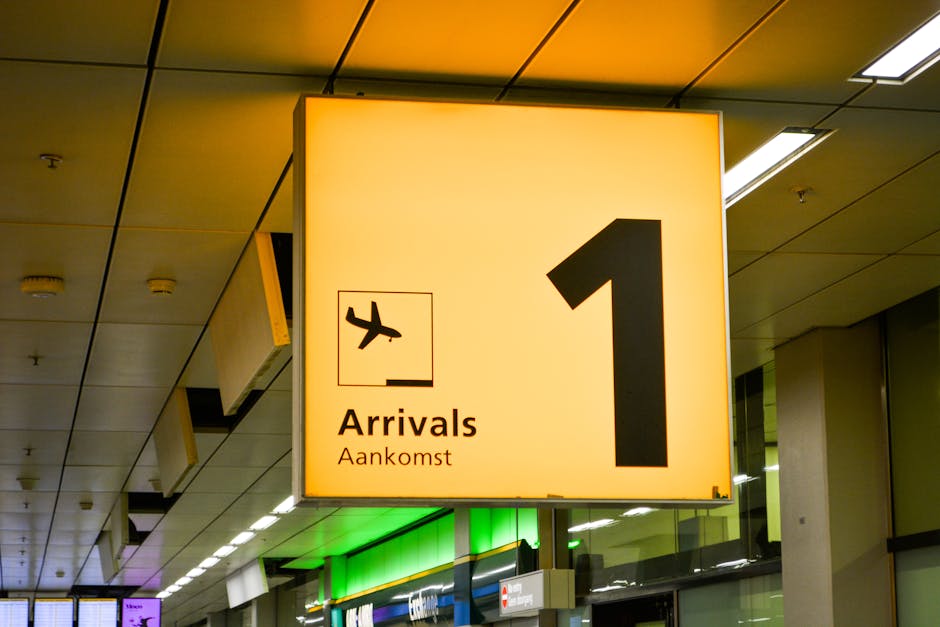Navigating Airport Delays and Cancellations: Tips for Surviving Disruptions
Air travel has become an integral part of modern life, offering convenience and global connectivity. With its benefits comes the occasional hassle of delays and cancellations that can disrupt carefully planned itineraries. Whether due to weather conditions, technical issues, or labor disputes, such disruptions are not uncommon and can create significant stress for travelers. Understanding how to manage these situations effectively is key to maintaining composure and minimizing inconvenience.

Understanding the Causes of Delays and Cancellations
Delays and cancellations can occur for various reasons, many of which are outside the airline's control. Weather is a leading cause, with storms, fog, and other adverse conditions impacting flight schedules. For instance, the Federal Aviation Administration (FAA) reports that weather accounts for approximately 69% of delays in the United States annually. Operational factors like crew shortages or mechanical issues also play a significant role.
Labor strikes and regulatory changes further complicate matters. In recent years, strikes by airport staff and air traffic controllers have caused widespread disruptions across Europe. Meanwhile, changes in air traffic control procedures or government mandates can lead to unexpected schedule adjustments.
Understanding these causes helps travelers anticipate potential issues and prepare accordingly. Monitoring flight status updates through airline apps or third-party platforms can provide real-time information about potential disruptions.
Preparing for Potential Disruptions
Preparation is the first step to mitigating the impact of delays or cancellations. Booking flights early in the day reduces the likelihood of cascading delays affecting Data from the U.S. Department of Transportation indicates that morning flights are generally more punctual than those scheduled later in the day.
It's also wise to avoid tight connections whenever possible. A buffer of at least two hours between connecting flights allows for unforeseen delays without jeopardizing your itinerary. Additionally, consider travel insurance that covers disruptions, providing financial protection and assistance in rebooking flights or arranging accommodations.
Pack essentials in your carry-on bag to ensure comfort during unexpected waits. Items like snacks, a refillable water bottle, portable chargers, and basic toiletries can make a significant difference during long delays.
Dealing with Delays at the Airport
Once at the airport, staying informed is crucial. Use airline apps to receive updates on gate changes or new departure times instantly. If a delay occurs, approach airline staff calmly to inquire about options for rebooking or compensation.
Under certain circumstances, airlines are required to provide compensation for delays or cancellations. For example, European Union regulations mandate compensation ranging from €250 to €600 for delayed flights exceeding three hours if the airline is at fault. Familiarize yourself with passenger rights relevant to your destination.
During extended waits, take advantage of airport amenities like lounges or charging stations. Many airports now offer free Wi-Fi and designated quiet zones to enhance passenger comfort while waiting for their next flight.
Cancellations: What Are Your Options?
In case of a cancellation, airlines typically offer rebooking on the next available flight at no extra cost. Some may also provide meal vouchers or hotel accommodations depending on the circumstances and duration of the disruption.
If alternative arrangements offered by the airline do not meet your needs, consider exploring options on other carriers. Many airlines have interline agreements allowing them to rebook passengers on partner airlines during irregular operations.
Refunds are another option if you decide not to continue with your travel plans altogether. According to the U.S. Department of Transportation’s guidelines, passengers are entitled to a full refund for canceled flights regardless of whether they booked non-refundable tickets.
Tools and Resources for Managing Disruptions
Numerous tools and resources can assist travelers in handling delays or cancellations effectively:
- Flight Tracking Apps: Platforms like FlightAware and FlightRadar24 provide real-time updates on flight status and air traffic conditions.
- Loyalty Programs: Frequent flyer programs often grant members access to priority rebooking services and airport lounges during disruptions.
- Travel Insurance Providers: Companies such as Allianz Travel Insurance offer plans covering trip interruption due to unforeseen events.
Utilizing these resources can significantly reduce stress and streamline decision-making during disruptions.
Avoiding Common Mistakes During Disruptions
Panic often exacerbates an already stressful situation during delays or cancellations. Maintaining composure is essential for making rational decisions quickly. Avoid taking frustrations out on airline staff; instead, focus on exploring available options collaboratively.
Avoid neglecting backup plans altogether. Having a contingency plan involving alternative modes of transportation (like trains or buses) can prove invaluable when flights are grounded indefinitely.
An additional pitfall is failing to document expenses incurred during disruptions. Keep receipts for meals, accommodation, or transportation as they may be reimbursable under certain circumstances depending on your ticket type or travel insurance policy.
Navigating through airport delays and cancellations requires preparation, patience, and resourcefulness. From understanding common causes like weather conditions and operational challenges to utilizing tools such as flight tracking apps or travel insurance policies, there are numerous strategies to minimize inconvenience during disruptions.
The key lies in staying informed and proactive throughout - you can turn an otherwise stressful experience into one that's manageable (and perhaps even educational) in shaping future travel plans.
This article was generated by AI